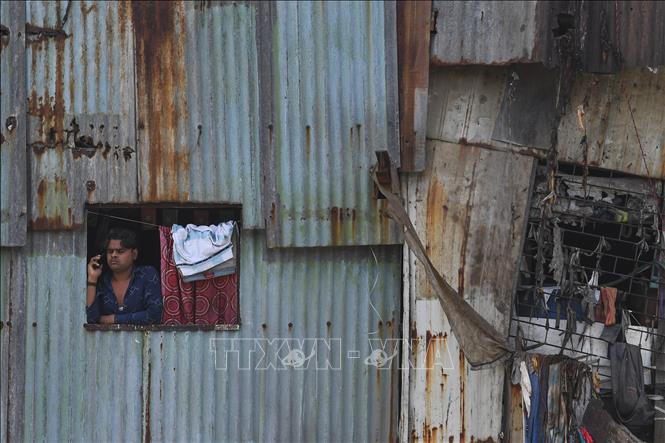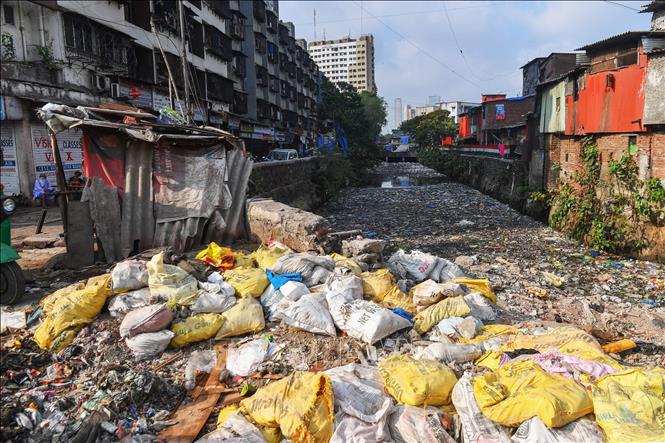Transforming Asia’s Largest Slum into a Modern Economic Center

Image: Dharavi slum in Mumbai. Photo: AFP/TTXVN
Dharavi, located in the heart of Mumbai, is known as Asia’s largest slum. However, ambitious plans are underway to transform this overcrowded area into a modern economic center. The redevelopment project, a joint venture between the Maharashtra state government and the Adani Group, aims to gather data from hundreds of thousands of residents to determine their relocation needs. This initiative, known as the Dharavi Redevelopment Project, will start with a survey in the Kamla Raman Nagar area, assigning each household a unique number to create corresponding development plans based on the collected data.
The spokesperson for the joint venture stated that the survey, coupled with laser mapping technology, will create the first-ever digital map of a settlement. This marks the initial step in Adani’s goal to turn this densely populated slum into India’s financial capital.
Ambitious Plans and Challenges
Despite winning the bid for the slum’s redevelopment, Adani’s plans for Dharavi remain unclear. Bloomberg reports that the billionaire businessman has spent a significant amount of time persuading foreign investors. It is highly likely that he intends to transform Dharavi into modern apartments, offices, and commercial centers.
Gautam Adani’s efforts to overhaul Dharavi have attracted considerable attention, as the slum has been renowned as a tourist attraction and the backdrop for several films, including the Oscar-winning movie “Slumdog Millionaire” in 2009.
Adani acknowledges that resettling one million residents poses a significant challenge. To accomplish this ambitious transformation project, he faces substantial opposition from politicians, slum dwellers, and legal barriers.
For decades, Mumbai’s administration has struggled to modernize the slum due to difficulties in acquiring large plots of land and attracting investors to an area lacking stable facilities and suitable relocation opportunities for approximately one million inhabitants.

Image: Overcrowded and unsanitary conditions in Asia’s largest slum. Photo: AFP/TTXVN
In 2007, a survey conducted by the non-governmental organization Maharashtra Social Housing and Action League revealed that Dharavi housed around 47,000 residents and 13,000 legally registered businesses. The unofficial population continued to grow in the subsequent years. In 2018, the government released a seven-year redevelopment package for Dharavi, with a 20% contribution from the government and 80% from the private sector. Dubai-based SecLink and India’s Adani Group were among the bidders.
In 2019, SecLink won the bid with the highest offer of $871 million, while Adani secured the second position with a bid of $548 million. However, in 2020, the Maharashtra government canceled the tender, citing changes in redevelopment costs due to land acquisition after the bidding process concluded. SecLink subsequently filed a lawsuit against the Maharashtra government in the Bombay High Court, alleging unjust cancellation.
The Maharashtra government then issued a revised tender for the Dharavi redevelopment project with modified terms. Adani Group emerged as the winner with a bid of $618 million.
Following the Adani Group’s victory in securing the redevelopment rights, Gautam Adani revealed his plans to transform Dharavi into a modern economic center that supports small industries and promotes employment opportunities focusing on youth and women.
According to Adani’s announcement in January, the company intends to provide larger housing units to Dharavi residents, exceeding the previously proposed size, aiming to convince them to relocate and prevent potential protests. However, only those who were living in Dharavi before 2000, primarily those residing on the ground floor, qualify for free housing. Approximately 700,000 residents living on higher floors are considered ineligible and will be relocated 10 kilometers away, requiring an upfront payment for new accommodation.
Adani Group plans to collaborate with Indian architect Hafeez Contractor, US-based design firm Sasaki, and UK-based consulting company Buro Happold for the redevelopment of Dharavi.
